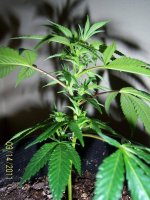should i just leave it on the stir fry?
or could it benefit a soil? diluted of course. It is not heated or fermented in the making.

naturally occurring sodium, not added.
maybe im crazy?
or could it benefit a soil? diluted of course. It is not heated or fermented in the making.
Bragg Liquid Aminos is a Certified NON-GMO liquid protein concentrate, derived from healthy soybeans, that contains the following Essential and Non-essential Amino Acids in naturally occurring amounts:
16 Amino Acids
Alanine
Arginine
Aspartic Acid
Glutamic Acid
Glycine
Histidine
Isoleucine
Leucine
Methionine
Phenylalanine
Proline
Serine
Threonine
Tyrosine
Valine
Lysine

naturally occurring sodium, not added.
maybe im crazy?




